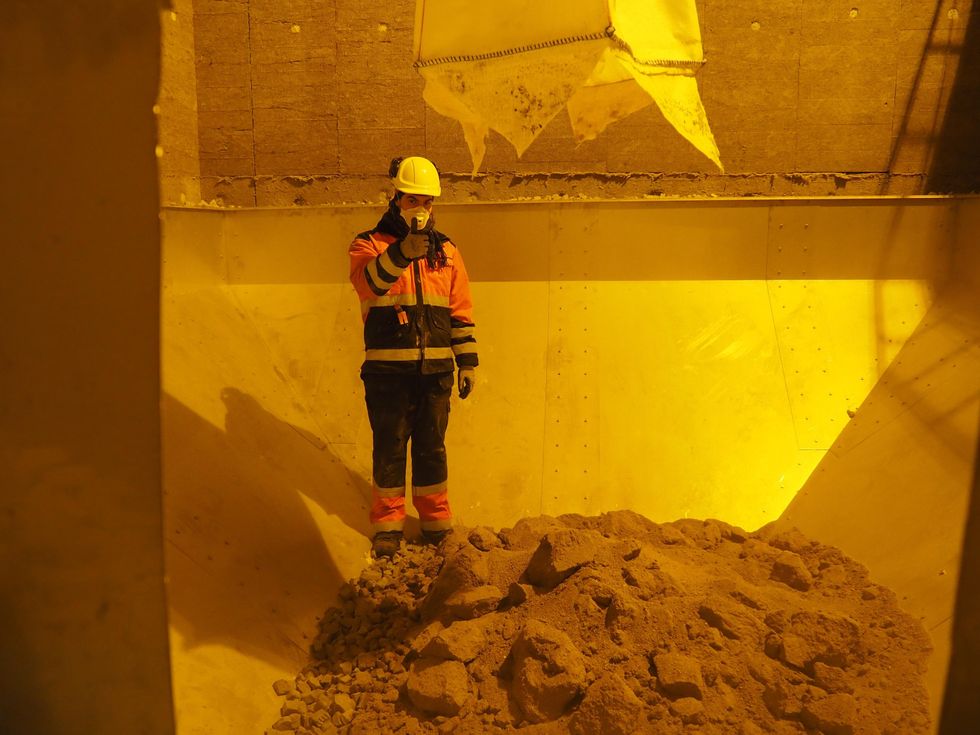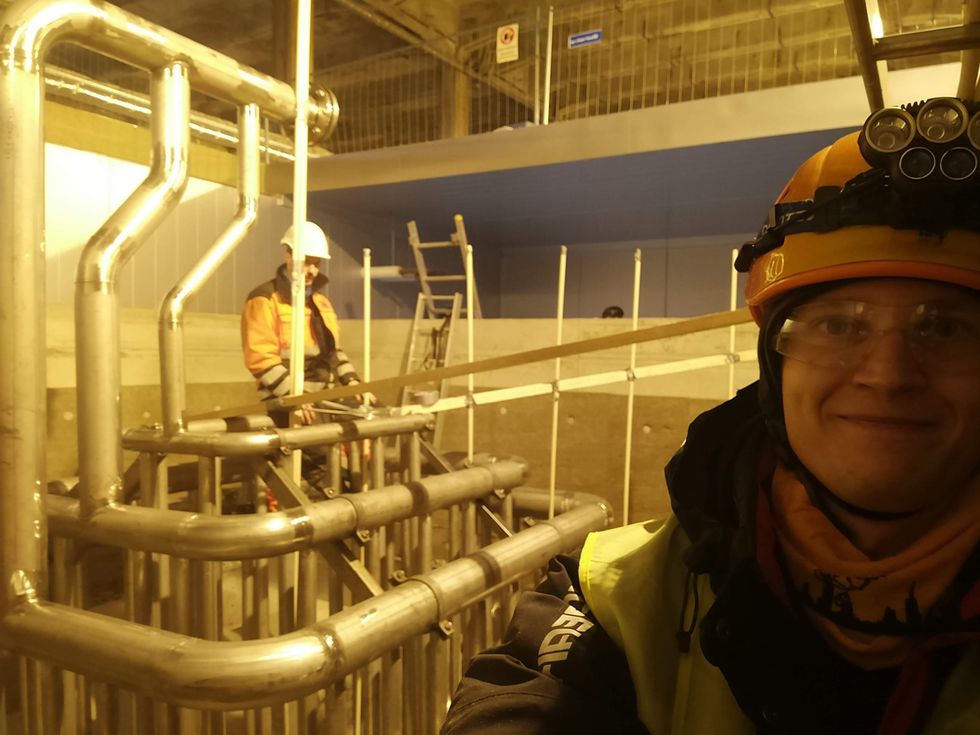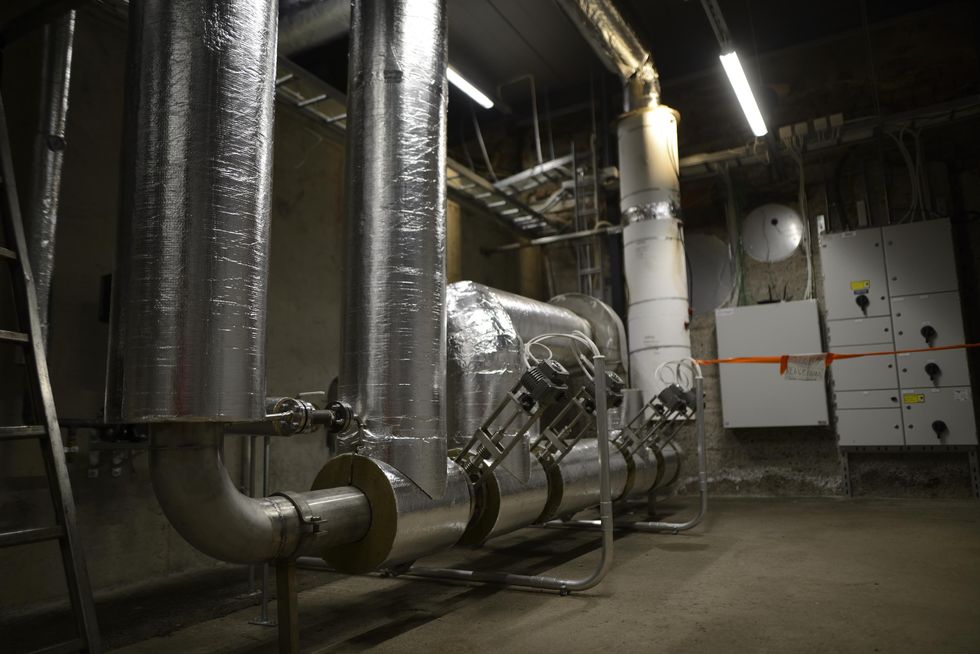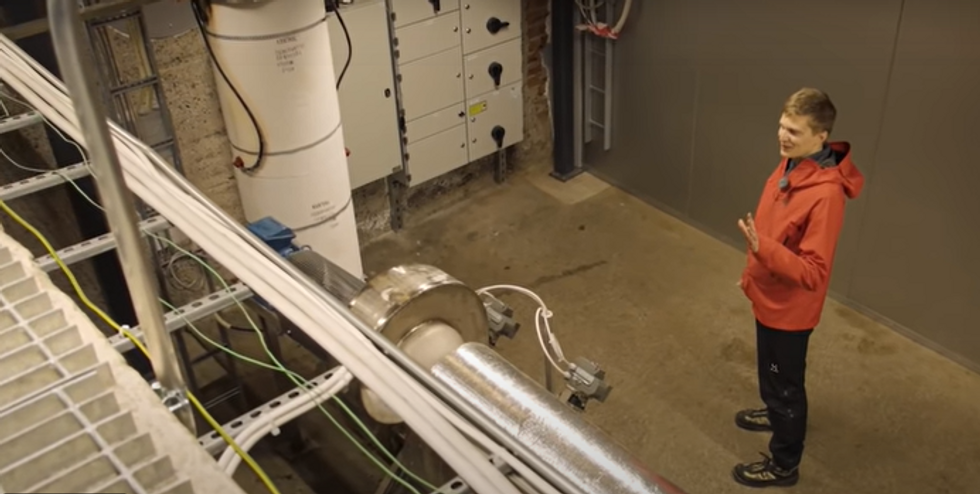This sponsored article is brought to you by COMSOL.
As we try to objectively study nature, we are often reminded of how natural forces affect us personally. We can sit at a desk and consider heat in its various forms, but we might be distracted if our toes are cold! When we turn up the heat in our homes and workplaces, we must balance our personal need for warmth with the global impact of burning fossil fuels like oil, gas, coal, and biomass. Anthropogenic climate change confronts humanity with a challenge: How can we keep warm now as we try to prevent our world from overheating in the future?
It is a daunting question that a startup called Polar Night Energy, in the small and chilly nation of Finland (Figure 1), is attempting to answer. In a region known for long, dark winter nights, Polar Night Energy is building a system in the city of Tampere that can heat buildings with stored solar energy — all day, all night, and all winter long. The apparent contradictions do not end there. In an era of complex cleantech solutions, often made from rare and expensive materials, Polar Night Energy’s heat storage and distribution system consists of simple ducts, pumps, valves, and sand. The novel system shows potential for tackling global problems in a patient, thoughtful, and human-scaled way.
A Small Country with Large Heating Needs
Big problems demand big solutions, and there is perhaps no bigger 21st-century problem than climate change. To meet this challenge, many governments and organizations are investing in new technology to help lessen the use of fossil fuels. These initiatives have largely focused on renewable electric power generation, distribution, and storage.
“When you ask people about cleaner energy, they think of electricity,” says Tommi Eronen, CEO of Polar Night Energy. “But we also have to cut emissions from heating.” Out of Finland’s energy-related emissions, 82 percent come from heating domestic buildings (Ref. 1). “We want to replace all of that if we are to have any hope of meeting our global climate goals,” Eronen says.
Think Globally, Heat Locally
The spirit of “Think Globally, Act Locally”, a mantra associated with the 1960s, lives on with Polar Night Energy’s team of innovators. Their journey began with a question posed by its founders, Tommi Eronen and Markku Ylönen, when they were university classmates: “Is it possible to build an energy-self-sufficient and cost-effective hippie commune for engineers using only solar power?” After graduation, the project they codenamed “Hippie Commune” became Polar Night Energy, with Eronen as CEO and Ylönen as CTO.
What began as a lighthearted (but serious) student project led to a 3 MWh/100 kW pilot plant in the Finnish city of Tampere, which began operation during the winter of 2020–2021. The system uses electricity to heat air, which is then circulated through an exchanger that heats water and distributes it to multiple buildings in the city’s Hiedanranta district (Figure 2).
Inside the system, electrically powered resistive heating elements heat air to more than 600°C. The hot air is circulated through a network of pipes inside a sand-filled heat storage vessel. The hot air then flows back out of the vessel into a heat exchanger, where it heats water that is then circulated through building heating systems. The sand’s heat storage capacity ensures that even when the resistive elements are cool, the circulating air is still hot enough to keep the water (and buildings) warm.
“We only have pipes, valves, a fan, and an electric heating element. There is nothing special here!” Eronen says, laughing.
A Battery for Heat Made from Sand
Noted chemical engineer Donald Sadoway is quoted as saying: “If you want to make a dirt-cheap battery, you have to make it out of dirt.” Polar Night Energy’s system faces the same core challenges as any other energy infrastructure. It must deliver power to people when they need it, where they need it, and at a manageable price. This means that storing and distributing energy is as important as its generation. Existing infrastructure meets these challenges in familiar ways. For combustion-based heating, fuels like oil and gas are stored and moved to where they can be burned. The electrical grid also supports the efficient distribution of power and makes use of energy generated through renewable means like wind and solar. The intermittent nature of daylight and strong winds, however, is a stubborn problem. Energy storage is needed to maintain steady power output throughout the peaks and valleys of renewable inputs. But even with recent advances in battery technology, storing electric power remains relatively expensive, especially at the scale required for heating buildings. What if, rather than storing electricity, a “battery” could store heat instead?

Figure 3. Markku Ylönen with a representative sample of Polar Night Energy’s dirt-cheap heat storage medium.
Many conventional heating systems already store and distribute heat by retaining and circulating warm water. Eronen and Ylönen recognized the benefits of water-based heat storage as well as its limitations. “There is only so much heat you can add to water before it becomes steam,” says Eronen. “Steam can efficiently distribute heat, but it is not really cost-effective for large-scale storage.” To avoid the drawbacks of storing heat in water, they instead turned to sand — 42 metric tons of it! (Figure 3) After the Sun goes down, the sand’s stored heat is gradually released back into the circulating airflow. This keeps the air hot enough to maintain steady temperatures in the water that flows through customers’ radiators. In this way, sand enables solar power to keep people warm, even during the darkest and coldest Finnish nights. “Sand provides four times the energy storage capacity of water,” Eronen says. “Sand is efficient, nontoxic, portable, and cheap!”
“We need predictive modeling to answer as many questions as possible, before we commit to assembling all this equipment—and all this sand!”
—Tommi Eronen, CEO of Polar Night Energy
The Sophisticated Analysis Behind a Simple Solution
Cost efficiency is the foundation of Polar Night Energy’s value proposition. “As soon as we decided to pursue this idea, we were trying to figure out how the finances looked,” says Eronen. In their quest to do more with less, Polar Night Energy has long depended on numerical simulation tools. Eronen and Ylönen began using the COMSOL Multiphysics software as students and it remains integral to their design process. For example, Eronen mentions the specifications of an expanded heat storage system that would serve more buildings in Tampere. The team calculated that supplying heat to a district of 35,000 people would require a sand-filled storage cylinder that is 25 meters tall and 40 meters in diameter. How did they arrive at these dimensions? “The rough quantity of material needed is actually easy to calculate, because we know how much heat we can store in a cubic meter of sand,” Eronen explains. “We also had to determine the space required for efficient heat transfer between the sand and our air circulating system (Figure 4). That is much more difficult to do! We used COMSOL to model and evaluate different design options.”

Figure 4. Tommi Eronen (foreground) and Ylönen inspecting the ductwork of a Polar Night Energy heat storage vessel.
Multiphysics simulation software helped shape Polar Night Energy’s heat exchanger design (Figures 5–6). Eronen says, “We built a particular model to explore a design idea: What if we created a super hot core of sand surrounded by heating ducts around the perimeter?” By modeling fluid flow and heat transfer effects in the COMSOL Multiphysics software, the Polar Night Energy team could quantify its design’s comparative advantages and drawbacks. “The simulation confirmed that the ‘hot core’ design was good at storing heat for very long periods of time,” says Eronen. “But for our intended operational cycle, it makes more sense to evenly distribute hot air ducts throughout the sand storage vessel,” he explains.
The sheer scale of Polar Night Energy’s sand-based heat storage system makes simulation software indispensable. “We cannot possibly build full-size prototypes to test all of our ideas. We need predictive modeling to answer as many questions as possible, before we commit to assembling all this equipment — and all this sand!” Eronen says. “It is essential for us to use these immensely powerful tools.”
Adapting New Ideas to Existing Infrastructure
By separating the task of heat storage from heat generation and distribution, Polar Night Energy has made its system more efficient and adaptable. There is great potential for retrofitting their sand-filled heat storage and transfer systems into existing infrastructure (Figure 7). Tampere, an inland Finnish industrial city of nearly 250,000 people, is an ideal testing ground for this new technology. “Tampere, like many European cities, already has a district heating system that circulates water across entire neighborhoods,” says Eronen. “That enables us to switch many buildings to a renewable heat source quickly,” he says. Polar Night Energy’s pilot plant in Tampere can also tap into power from the existing electrical grid, along with electricity generated by new solar panels. Reliable thermal storage enables the city to generate or purchase power when it is most affordable and then distribute heat when it is needed most.

Figure 7. Part of the heat transfer system installed by Polar Night Energy in Tampere, Finland. The vertical pipes at left are part of the heat exchanger, while the resistive heater elements are wrapped in white insulation at right. Between these components is the air-circulating radial blower.
Today: Finland; Tomorrow: The World
Since the Tampere system began operation during the winter of 2020–2021, the Polar Night Energy team has been gathering data to compare to their models. “Our simulations have proven to be very accurate, which is encouraging,” Eronen says. And as the Polar Night Energy team continues to develop their ideas locally, they are aiming to act globally as well. The same technology that warms Finland’s long, chilly nights can also provide better energy management options to the rest of the world. Affordable thermal storage could help industries and cities capture heat that is currently wasted, as well as balance the inconsistencies in wind and solar power output. But while Polar Night Energy is eager to work directly with potential customers, they realize that the challenges ahead are too big for them to tackle alone.

Tommi Eronen, CEO of Polar Night Energy.
“We want to license this technology. If you operate a power plant, please contact us,” Eronen says with a laugh. On a more serious note, he adds, “We have to get away from all kinds of combustion, even biomass. We need to protect and restore forests so they can keep removing carbon from the air. Because climate change is happening so fast, we want our ideas to spread as quickly as possible.”
Reference
Statistics Finland, “Over one-half of Finland’s electricity was produced with renewable energy sources in 2020”, November 2021.
#Polar #Night #Energy #Designs #SandBased #Heat #Storage #System






